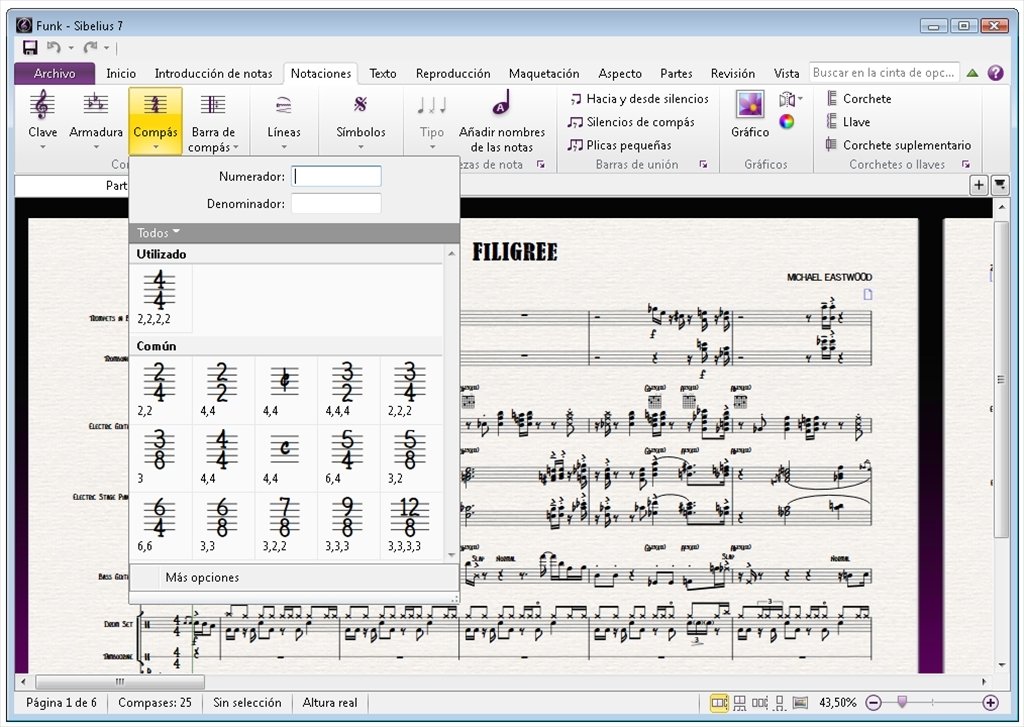

- Change tempo in sibelius software#
- Change tempo in sibelius plus#
- Change tempo in sibelius professional#
It is difficult to stretch a word over two notes and it can look messy as the words are not always evenly spaced. The lyrics tool is time-consuming and can become tedious as each word or syllable has to be hand input and to copy text from another program involves separating the text into syllables.
Change tempo in sibelius professional#
Drums are challenging and slow and the note head feature is time consuming, but it does work and the end result is a very professional drum part.

It also doesn’t have a feature to play back chords without writing them out in full, but I can create the chords so that the guitarist can see them, and simply play along myself.
Change tempo in sibelius software#
Writing guitar parts using the Tablature feature is slow, and as a guitarist myself I recommend using other specialist software if you’re just writing guitar music - chances are it’ll be easier. However, as with any piece of software, there are a few things that don’t quite work as well as I might have liked. Sibelius has a feature which allows you to put a video alongside the score if you are composing film music and trying to time everything perfectly. Tempo change is also slick and easy, and dynamics are simple and effective. Changing the time or key signature is also very simple and transposition is almost perfect. It is possible to input notes step by step or in real-time, depending on the requirements. Using a MIDI keyboard is very effective and, if you are a pianist, saves lots of time and effort. Sibelius also has many different ways of viewing what you’re doing, which really helps, though which you prefer using is personal to you. Once you’ve learnt the vast majority of them inputting tunes and chords becomes quite straight forward, being able to add a third or a specific note with the tap of a key. Inputting notes takes time as with any software but there are plenty of keyboard shortcuts to keep you on your toes. This helpline is also free, which is an added bonus. It has an efficient help-line and any problems I had were solved in minutes by a helpful person with a computer somewhere receiving my e-mails, and replying with clear instructions. It is easy to toggle between playing and not playing repeats, and as with most of the playback tools it seems to work pretty well. The repeat tools also all work, and I can insert one and two-time bars without a problem. It also contains many useful features which are hard to find elsewhere, such as an easy tempo change and pre-set markings such as lento etc, as well as a fully functioning pedal feature for piano (a phenomenon which I find difficult to come across elsewhere) and pizzicato for strings. It was designed, I think, for classical composition and it is quick and easy to write simple pieces in a basic classical style. I’ve tried to compose in many different styles (jazz, rock, ragtime) and it supports most of them fairly well.
Change tempo in sibelius plus#
Overall the program is good and has various plus points and useful features. Of course, the more money you pay, the more features you get, but at £99 for a student copy I think it’s pretty good, and definitely worth getting if you’re a keen GCSE student, even if it does have a few glitches here and there. Even the student version, which I’m using, has a huge number of features. I’m a young composer and recently I’ve been trying to find my way around the most used notation software on the planet: Sibelius.


 0 kommentar(er)
0 kommentar(er)
